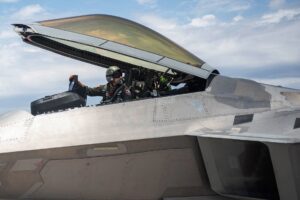
The U.S. Air Force is not looking to replace the Lockheed Martin [LMT] 187 F-22s one-for-one with the Next Generation Air Dominance (NGAD) family of systems, but rather will determine mission sets for NGAD to generate NGAD requirements numbers, a service official said on Aug. 12. Air Force Chief of Staff Gen. Charles Q. Brown has said that the service plans to neck down from seven fighter types–the Lockheed Martin F-16, F-35A, and F-22 and the Boeing [BA] F-15C, F-15D,…














